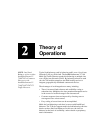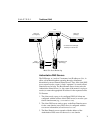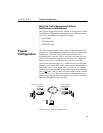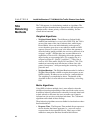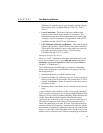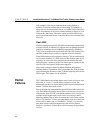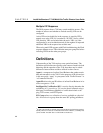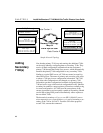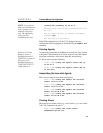
C H A P T E R 2Intel® NetStructure™ 7190 Multi-Site Traffic Director User Guide
12
load potential of the servers underneath the load balancers it
monitors. Therefore it allows the next best thing. For example, it
allows the user to declare that if Server A is within 2400 connections
(80% of maximum) of Server B, consider referrals to Server A even
if Server B is the lowest. The factor setting would be 2400 for the
service associated with Server A and 0 for the service associated with
Server B.
Flash DNS
Network topology can greatly affect the overall transfer rate between
a site and a client. A solution is to replicate sites on multiple networks
(which are sometimes also distributed geographically). Without a
7190, it can be cumbersome to provide users with a list of mirror sites
and then let them choose which one appears to be best for them.
Flash DNS addresses this problem by letting a 7190 at each network
site send out responses to a DNS query for the site host name. If all
responses are sent at the same time then the site that has the least
network latency connecting to the user should get its response to the
user first. The user ignores all the other responses.
Since many enterprise clients are behind firewalls that perform
Network Address Translation (NAT), by default, the 7190 performs
source IP using the IP address of the 7190 that originally received the
DNS request. This feature can be disabled.
Partial
Failures
The 7190 maintains the current metric state of each service on a per
host basis. A “service” is an IP address and port at a site. The
maintained state has four levels relating to the amount of information
that the 7190 has about each service.
Each load balancing method handles partial failures in the same basic
way. Each balancing method always tries to find at least one service
with a metric status of “OK” with which to balance. If no services are
available at this highest metric state, and it is not using a metric
balancing method, then it looks for at least one service with a metric
state of “No Services”. If none are found then it looks for at least one
service with a metric state of “No Metrics”. Finally, if no services
have been found at a high enough metric state level to balance
normally, it performs a round robin selection among all the enabled
services.




